Lingyu Wei
Normalized Avatar Synthesis Using StyleGAN and Perceptual Refinement
Jun 21, 2021
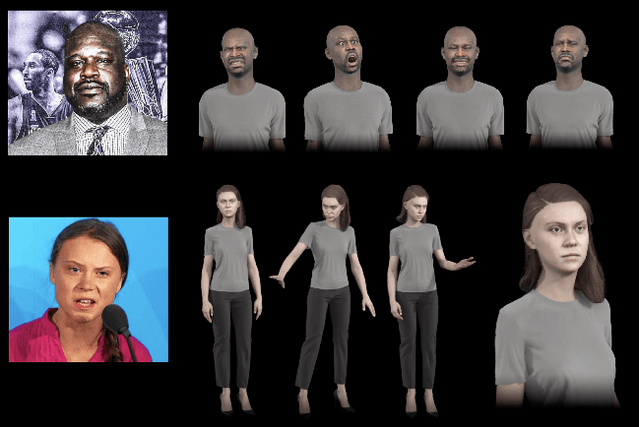

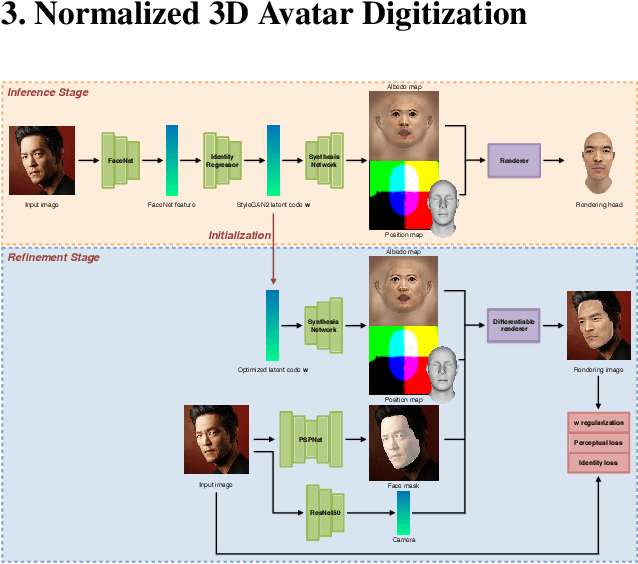
Abstract:We introduce a highly robust GAN-based framework for digitizing a normalized 3D avatar of a person from a single unconstrained photo. While the input image can be of a smiling person or taken in extreme lighting conditions, our method can reliably produce a high-quality textured model of a person's face in neutral expression and skin textures under diffuse lighting condition. Cutting-edge 3D face reconstruction methods use non-linear morphable face models combined with GAN-based decoders to capture the likeness and details of a person but fail to produce neutral head models with unshaded albedo textures which is critical for creating relightable and animation-friendly avatars for integration in virtual environments. The key challenges for existing methods to work is the lack of training and ground truth data containing normalized 3D faces. We propose a two-stage approach to address this problem. First, we adopt a highly robust normalized 3D face generator by embedding a non-linear morphable face model into a StyleGAN2 network. This allows us to generate detailed but normalized facial assets. This inference is then followed by a perceptual refinement step that uses the generated assets as regularization to cope with the limited available training samples of normalized faces. We further introduce a Normalized Face Dataset, which consists of a combination photogrammetry scans, carefully selected photographs, and generated fake people with neutral expressions in diffuse lighting conditions. While our prepared dataset contains two orders of magnitude less subjects than cutting edge GAN-based 3D facial reconstruction methods, we show that it is possible to produce high-quality normalized face models for very challenging unconstrained input images, and demonstrate superior performance to the current state-of-the-art.
Photorealistic Facial Texture Inference Using Deep Neural Networks
Dec 02, 2016
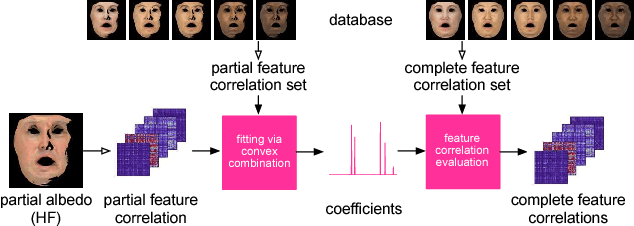

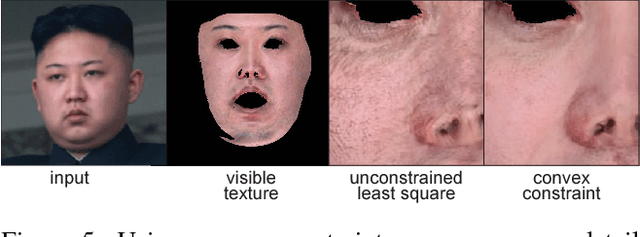
Abstract:We present a data-driven inference method that can synthesize a photorealistic texture map of a complete 3D face model given a partial 2D view of a person in the wild. After an initial estimation of shape and low-frequency albedo, we compute a high-frequency partial texture map, without the shading component, of the visible face area. To extract the fine appearance details from this incomplete input, we introduce a multi-scale detail analysis technique based on mid-layer feature correlations extracted from a deep convolutional neural network. We demonstrate that fitting a convex combination of feature correlations from a high-resolution face database can yield a semantically plausible facial detail description of the entire face. A complete and photorealistic texture map can then be synthesized by iteratively optimizing for the reconstructed feature correlations. Using these high-resolution textures and a commercial rendering framework, we can produce high-fidelity 3D renderings that are visually comparable to those obtained with state-of-the-art multi-view face capture systems. We demonstrate successful face reconstructions from a wide range of low resolution input images, including those of historical figures. In addition to extensive evaluations, we validate the realism of our results using a crowdsourced user study.
Dense Human Body Correspondences Using Convolutional Networks
Jun 26, 2016


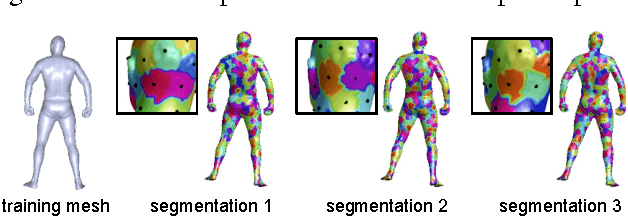
Abstract:We propose a deep learning approach for finding dense correspondences between 3D scans of people. Our method requires only partial geometric information in the form of two depth maps or partial reconstructed surfaces, works for humans in arbitrary poses and wearing any clothing, does not require the two people to be scanned from similar viewpoints, and runs in real time. We use a deep convolutional neural network to train a feature descriptor on depth map pixels, but crucially, rather than training the network to solve the shape correspondence problem directly, we train it to solve a body region classification problem, modified to increase the smoothness of the learned descriptors near region boundaries. This approach ensures that nearby points on the human body are nearby in feature space, and vice versa, rendering the feature descriptor suitable for computing dense correspondences between the scans. We validate our method on real and synthetic data for both clothed and unclothed humans, and show that our correspondences are more robust than is possible with state-of-the-art unsupervised methods, and more accurate than those found using methods that require full watertight 3D geometry.
Capturing Dynamic Textured Surfaces of Moving Targets
Apr 11, 2016

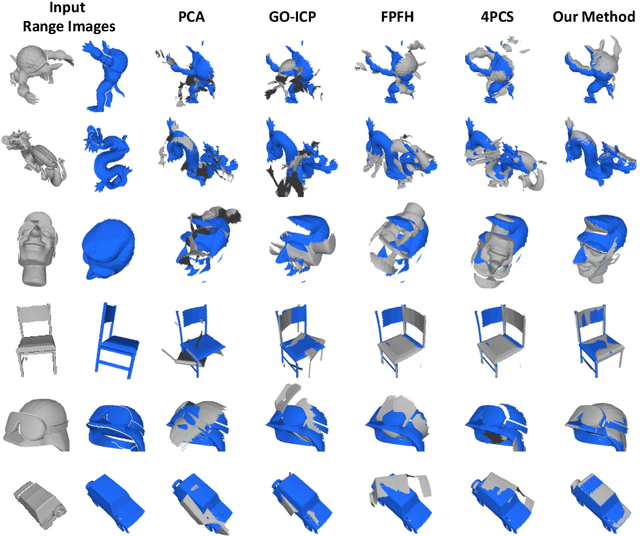
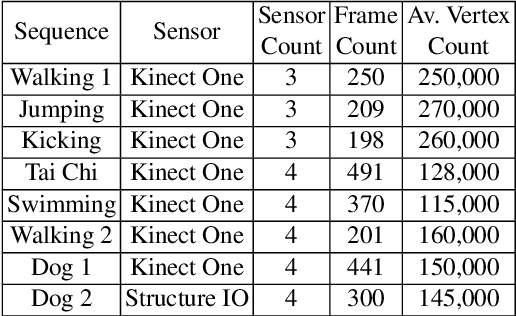
Abstract:We present an end-to-end system for reconstructing complete watertight and textured models of moving subjects such as clothed humans and animals, using only three or four handheld sensors. The heart of our framework is a new pairwise registration algorithm that minimizes, using a particle swarm strategy, an alignment error metric based on mutual visibility and occlusion. We show that this algorithm reliably registers partial scans with as little as 15% overlap without requiring any initial correspondences, and outperforms alternative global registration algorithms. This registration algorithm allows us to reconstruct moving subjects from free-viewpoint video produced by consumer-grade sensors, without extensive sensor calibration, constrained capture volume, expensive arrays of cameras, or templates of the subject geometry.
 Add to Chrome
Add to Chrome Add to Firefox
Add to Firefox Add to Edge
Add to Edge